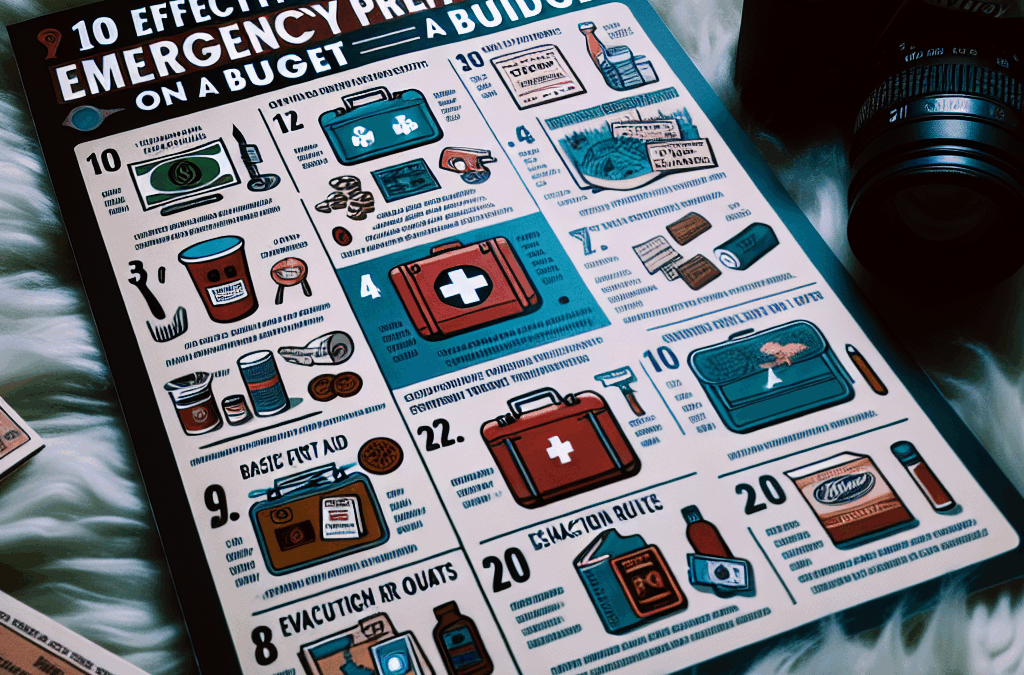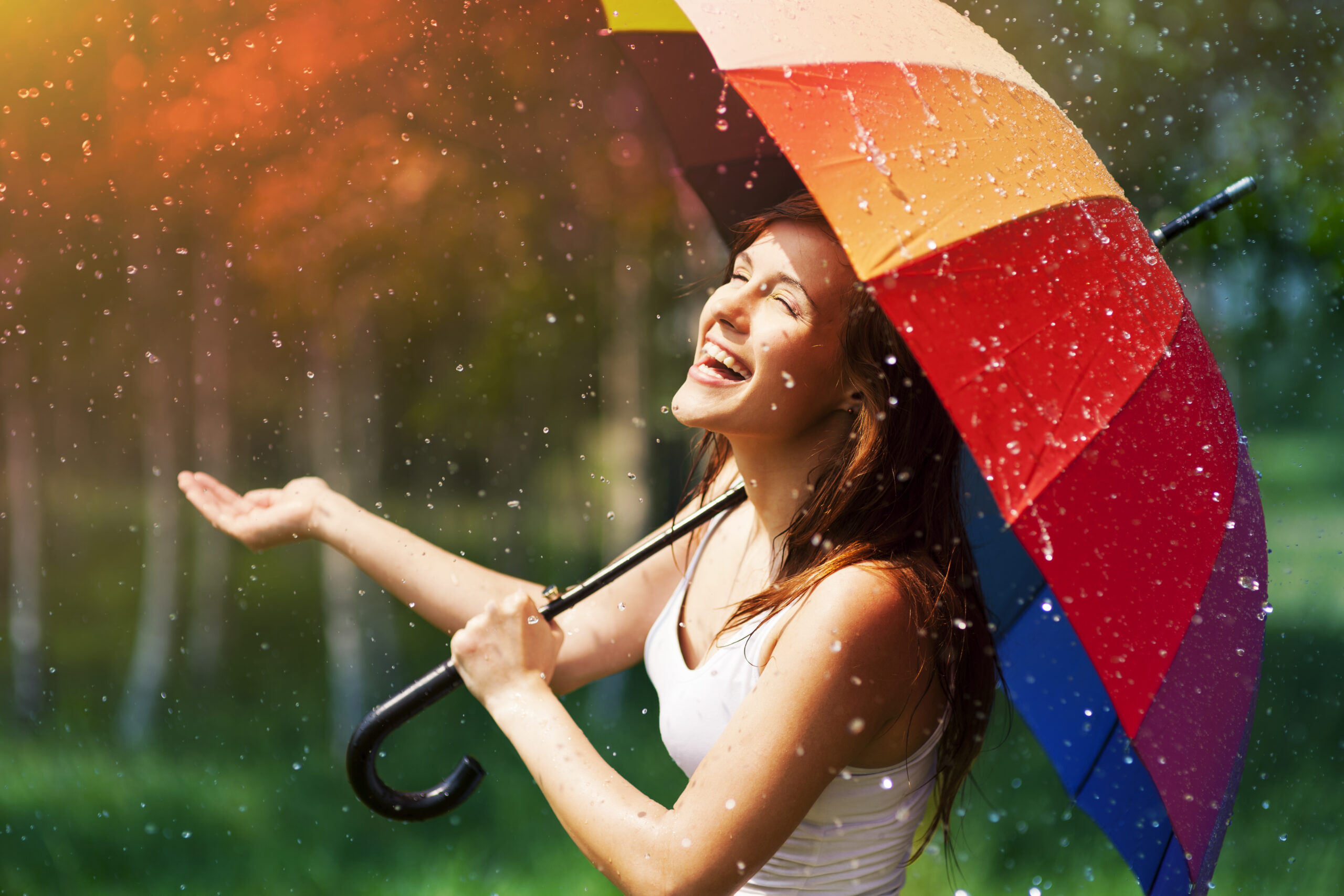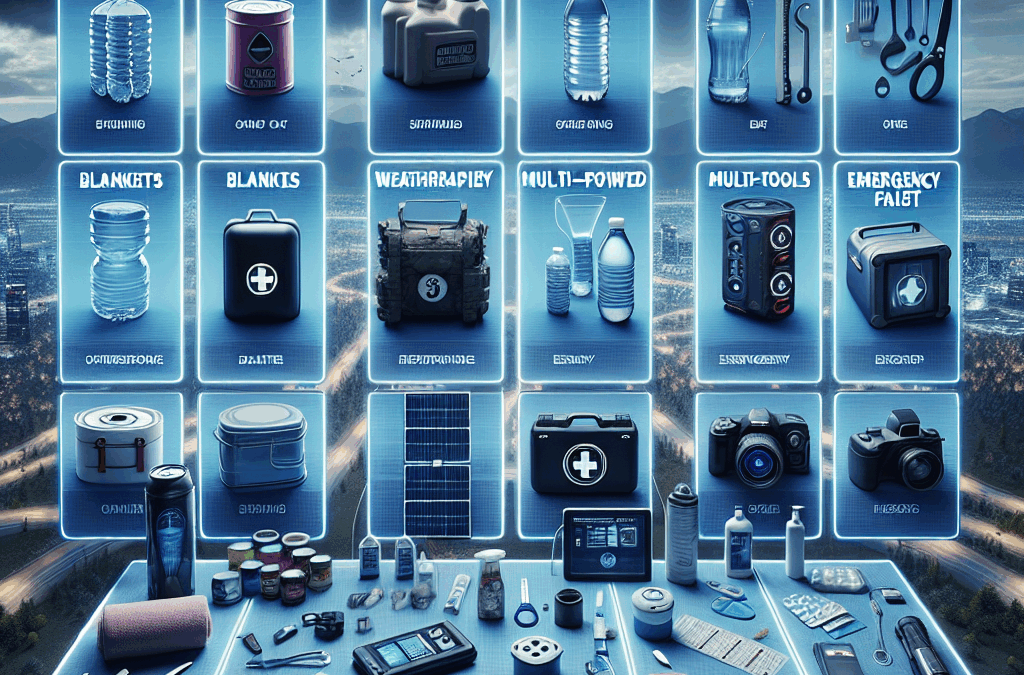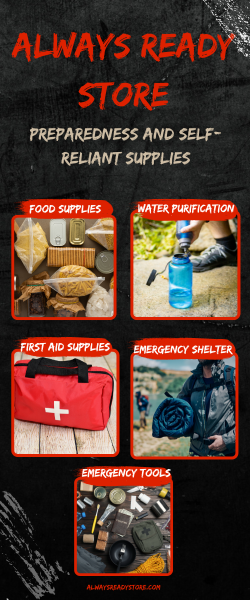
10 Effective Emergency Prep on a Budget Strategies for 2025
- Stockpiling Essential Supplies
- Create a Custom Emergency Plan
- Educate Yourself on Local Disasters
- Join Community Preparedness Groups
- Use Practical Homemade Prep Ideas
- Prioritize Water Storage and Purification
- Utilize Free Resources and Training
- Regular Maintenance and Review
- Document Your Preparedness & Insurance
- Stay Informed and Adapt Continually
1. Stockpiling Essential Supplies
Plan Your Emergency Supply Kit
Building an emergency supplies stockpile doesn’t have to break the bank. Focus on the essentialsânon-perishable food, clean water, medications, and hygiene products. For 2025, smart shoppers are purchasing bulk items during sales or utilizing coupons to maximize savings. Keep in mind that a well-rounded kit can sustain your family for at least 72 hours, which is the recommended initial response period during emergencies.
Start with a list of priority supplies, then gradually build your kit over time. Visit local discount stores and clearance sections for affordable options. Remember, it’s better to start small and expand rather than wait until a disaster strikes to gather everything all at once. Think about multi-use items, like water purification tablets and versatile canned foods, to stretch your dollar further.
Maintaining and rotating your stock is crucial. Use the first-in, first-out method to keep supplies fresh and functional. Also, label all items with expiration dates so you can replace them proactively for 2025’s evolving emergency scenarios.
Budget-Friendly Storage Solutions
Organizing your supplies doesn’t have to be costly. Use plastic bins, old suitcases, or repurpose containers you already have at home. Clear labeling helps you find items quickly during stressful situations. Consider investing in stackable storage for small spaces, and keep everything in a designated, easily accessible area.
Proper storage extends the shelf life of your supplies while keeping your prepping environment tidy. For 2025, DIY shelving units made from reclaimed wood or pallets are popular options. Effective storage solutions save money and make it easier to update your stockpile regularly.
Plus, transparent containers allow you to see whatâs inside without opening them, reducing waste and ensuring you know when supplies need replenishing.
2. Make a Custom Emergency Plan
Outline Clear Procedures for Your Family
Developing an emergency plan tailored to your household is a cost-effective way to enhance preparedness. Sit down with your family and map out escape routes, meeting points, and communication methods. Utilizing free templates from reputable emergency preparedness websites simplifies the process. Planning now, in 2025, is critical as climate change increases the frequency of weather-related disasters.
Maintain open communication so everyone understands their role during a crisis. Practice your plan periodically to identify areas for improvement. Drafting a plan doesn’t have to involve expensive consultants; your local community resources or online tutorials can provide guidance at no cost.
Distribute printed copies and store digital backups in accessible cloud storage. This ensures everyone has access to the plan even if traditional communication channels are disrupted.
Emergency Contact and Information Charts
Creating quick-reference sheets with emergency contacts, medical information, and important local resources is an inexpensive way to prepare. Laminate copies or keep digital versions on smartphones for easy access. Label these documents clearly and distribute them to family members or neighbors.
Including vital information such as nearest shelters, hospitals, and utility contact numbers increases your resilience during unpredicted events.
This proactive step minimizes chaos during emergencies, making your “emergency prep on a budget” efforts highly effective in 2025.
3. Educate Yourself on Local Disasters
Research Relevant Threats in Your Area
Understanding the common disasters in your regionâbe it hurricanes, earthquakes, floods, or wildfiresâguides your prepping priorities. The US Department of Homeland Security and local agencies publish free resources that detail regional risks for 2025. Use their data to tailor your supply stock, communication plans, and protective measures accordingly.
Being informed helps you anticipate specific needs, such as extra water during droughts or protective gear for wildfire-prone areas. This knowledge also influences your budget-friendly choices, focusing on acquiring only necessary supplies.
Stay updated through free online alerts, government advisories, and community workshops. Knowledge is powerâand cost-effective safety during emergencies.
Utilize Free Educational Resources
Many organizations offer free courses, webinars, and guides on emergency preparedness. Platforms like the FEMA website, local community centers, and non-profit organizations provide invaluable insight without any cost. Enrolling in online classes or viewing video tutorials helps you build skills such as first aid, CPR, and basic survival techniquesâessentials for cost-saving preparedness.
Implementing these skills reduces dependency on external services, cutting emergency response costs. In 2025, continuous self-education remains one of the best budget-friendly strategies.
Make it a family projectâlearning together fosters teamwork and ongoing readiness.
4. Join Community Preparedness Groups
Benefits of Local Networks
Community groups are a goldmine of shared resources, knowledge, and support for emergency prep on a budget. Participating in neighborhood associations or local disaster response teams often provides free trainings, equipment-sharing opportunities, and collective planning benefits.
In 2025, many local governments encourage community resilience and offer free or low-cost workshops. These groups can help you access bulk purchasing options, which significantly reduce individual costs.
Forming bonds with neighbors also means you can create support systems, like rotating shared supplies or volunteering during drills, enhancing overall preparedness without extra expenses.
Tips for Getting Involved
Check local social media, bulletin boards, or city websites for upcoming meetings and initiatives. Volunteering your time builds community, spreads awareness, and improves your own readiness. Often, community efforts culminate in shared resources, such as emergency kits or information sessions, beneficial for everyone involved.
Encouraging your neighborhood to participate also increases collective “emergency prep on a budget” capacity, creating resilient communities in 2025.
5. Use Practical Homemade Prep Ideas
DIY Emergency Supplies
Creating your own emergency supplies can save money while customizing your prep. For example, homemade heat packs from rice or beans in socks, or Solar-Powered LED lanterns assembled from affordable parts, are practical and effective.
Online tutorials and upcycling discarded or low-cost materials make these projects accessible. For instance, using old plastic bottles for water storage or repurposed containers for first aid kits can cut costs and reduce waste.
In 2025, DIY solutions remain popular among budget-conscious preppers, as they combine resourcefulness with practicality, making preparedness more accessible for everyone.
Healthy and Affordable Food Preservation
Learn simple, low-cost techniques like dehydration and canning to extend the shelf life of homemade or bulk foods. These methods help you stockpile nutritious meals for emergencies without relying exclusively on store-bought prepackaged foods.
For example, drying seasonal fruits or herbs from your garden saves money and provides essential nutrients during an emergency. Planning this in advance reduces reliance on expensive, processed foods and boosts your overall resilience.
Note that many online resources offer free guidance on food preservation, further supporting your “emergency prep on a budget” journey.
6. Prioritize Water Storage and Purification
Affordable Water Storage Solutions
Water is vital during emergencies, and storing enough on a budget is straightforward. Use food-grade barrels, large buckets, or even repurposed containers once cleaned thoroughly. A good rule of thumb is to store at least one gallon per person per day.
In 2025, consider stacking multiple containers in a shaded, secure location to extend your water supply’s durability. Labeling and rotating your stored water ensures safety and freshness.
Resources like local water authorities often provide guidance or even supplies at discounted prices during emergency preparedness campaigns.
Cost-Effective Water Purification Methods
Invest in affordable water purification options like boiling, chemical treatments (e.g., iodine tablets), or portable filters. These methods are inexpensive and highly effective, especially when operating on a budget.
For example, boiling water is free if you have a reliable heat source, and it kills most pathogens. Chemical tablets are inexpensive and easy to store long-term, making them ideal for 2025 planning.
Combining storage and purification strategies creates a robust water plan that is both budget-friendly and reliable.
7. Utilize Free Resources and Training
Government and NGO Resources
Many governmental agencies and non-profits offer free emergency preparedness tools, checklists, and training programs. These resources help you develop a solid plan without added costs. In 2025, leveraging these free assets maximizes your budget’s effectiveness.
Local fire departments, police stations, and community centers often host free workshops on basic first aid, CPR, and disaster preparedness. Attending these sessions enhances your skills and confidence during crises.
Bookmark official websites and subscribe to alerts to stay informed about free training opportunities, events, and updates related to emergencies in your area.
Online Courses & Community Webinars
The internet provides an abundance of free educational content. Platforms like YouTube, FEMA, and Red Cross host webinars and tutorials on surviving various disasters. These are excellent for continuous learning at no cost.
In 2025, commitment to ongoing education ensures your preparedness remains current and effective, all while maintaining a tight budget.
Encourage family members to participate, turning emergency prep into a shared, cost-free learning experience.
8. Maintain and Review Your Prep
Regular Inventory Checks
Set a schedule, perhaps quarterly, to review your supplies, test equipment, and update your plans. This routine helps prevent surprises during an emergency and ensures your “emergency prep on a budget” remains effective.
For example, rotate perishable items, test batteries and flashlights, and replace expired medications. Keeping an organized inventory simplifies this process and saves money by avoiding unnecessary purchases.
In 2025, staying proactive saves costs associated with emergency replacements and ensures your preparedness is always up-to-date.
Updating Plans as Needs Evolve
Life changes, and so should your emergency plans. As your family grows or moves, revise procedures accordingly. Follow new developments or threats in your area and adjust your supplies and strategies to stay current.
Using free online tools and community feedback makes this an affordable and ongoing process. Remember, a well-maintained prep plan is a cornerstone of effective “emergency prep on a budget.”
Flexibility and continuous improvement make your preparations more resilient and cost-efficient in 2025.
9. Document Your Preparedness & Insurance
Keep Records of Assets and Supplies
Creating an inventory of your emergency supplies, important documents, and insurance policies is a worthwhile investment. Store copies digitally and physically using low-cost binders or cloud storage. This documentation simplifies claims and replacements during disasters.
Regularly update these records to reflect new purchases or changes in your household. Doing so is a budget-friendly way to streamline recovery and ensure your “emergency prep on a budget” is comprehensive.
Good record-keeping minimizes financial losses and speeds up recovery, making it essential for any preparedness plan.
Review and Update Insurance Policies
Ensure your home, auto, and health insurance adequately cover disaster-related damages. Shop around annually to compare quotes and coverage options, often leading to better deals. Some insurers provide discounts for safety features or storm-proofing measures, which are low-cost upgrades that save money long-term.
In 2025, financial resilience is just as important as physical preparedness. Well-insured households recover faster and with less financial strain after an emergency.
This strategic review forms a crucial part of your comprehensive “emergency prep on a budget” approach.
10. Stay Informed and Adapt Continually
Follow News and Alerts
Consistently monitoring local news, weather alerts, and social media channels helps you stay ahead of potential disasters. Sign up for free notifications from your trusted sources for 2025’s most reliable information.
Being aware enables immediate action, which can prevent costly damages or injuries and aligns with your goal of effective emergency prep on a budget.
Real-time information is vital for quick decision-making and adjustments to your plans, ensuring you’ll be prepared regardless of shifting circumstances.
Refine Your Strategy Based on Experience
Each emergency or drill provides opportunity for learning. Write down lessons learned, and update your supplies, plans, or skills accordingly. Continuous improvement ensures your preparedness evolves with emerging threats and available resources.
Engaging with online communities and reading recent case studies enhances your knowledge base, often at no cost. In 2025, adaptability and learning are key to maintaining an effective, budget-conscious emergency plan.
Remember, being prepared is a dynamic process, and staying informed helps you keep your “emergency prep on a budget” relevant and effective.
Frequently Asked Questions
Q1: What are the best ways for emergency prep on a budget in 2025?
The best ways include planning ahead, utilizing free and low-cost resources, DIY solutions, and engaging with community groups to share resources and knowledge.
Q2: How much water should I store for emergencies?
Aim to store at least one gallon per person per day, covering drinking, cooking, and hygiene needs for at least 3 days, with longer durations for comprehensive preparedness.
Q3: How often should I review my emergency supplies?
Perform a thorough review every 3-6 months to replace expired items, update plans, and adjust supplies based on current needs and new risks.
Q4: Can I prepare fully for emergencies without spending a lot?
Absolutely. Focusing on education, community involvement, DIY methods, and strategic planning allows you to prepare effectively without overspending in 2025.
Q5: Why is emergency prep on a budget important?
It ensures that preparedness is accessible to everyone, reduces financial stress during crises, and promotes resilient communitiesâespecially important as 2025 brings new challenges and opportunities.
Conclusion
Effective emergency prep on a budget is entirely achievable with strategic planning, resourcefulness, and community involvement. As we look ahead to 2025, making smart, cost-effective choices ensures your safety and peace of mind without breaking the bank. Remember, preparedness isn’t about spending a lotâit’s about being smart, prepared, and adaptable. Start small, stay consistent, and keep learning. Your future self will thank you for taking these steps today!







